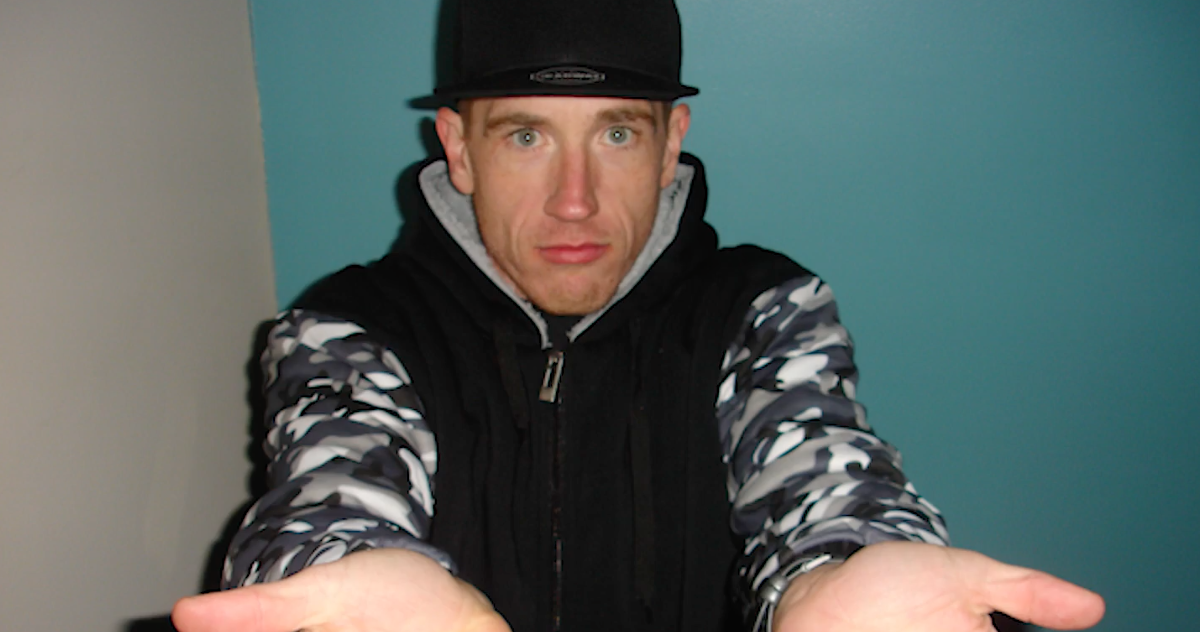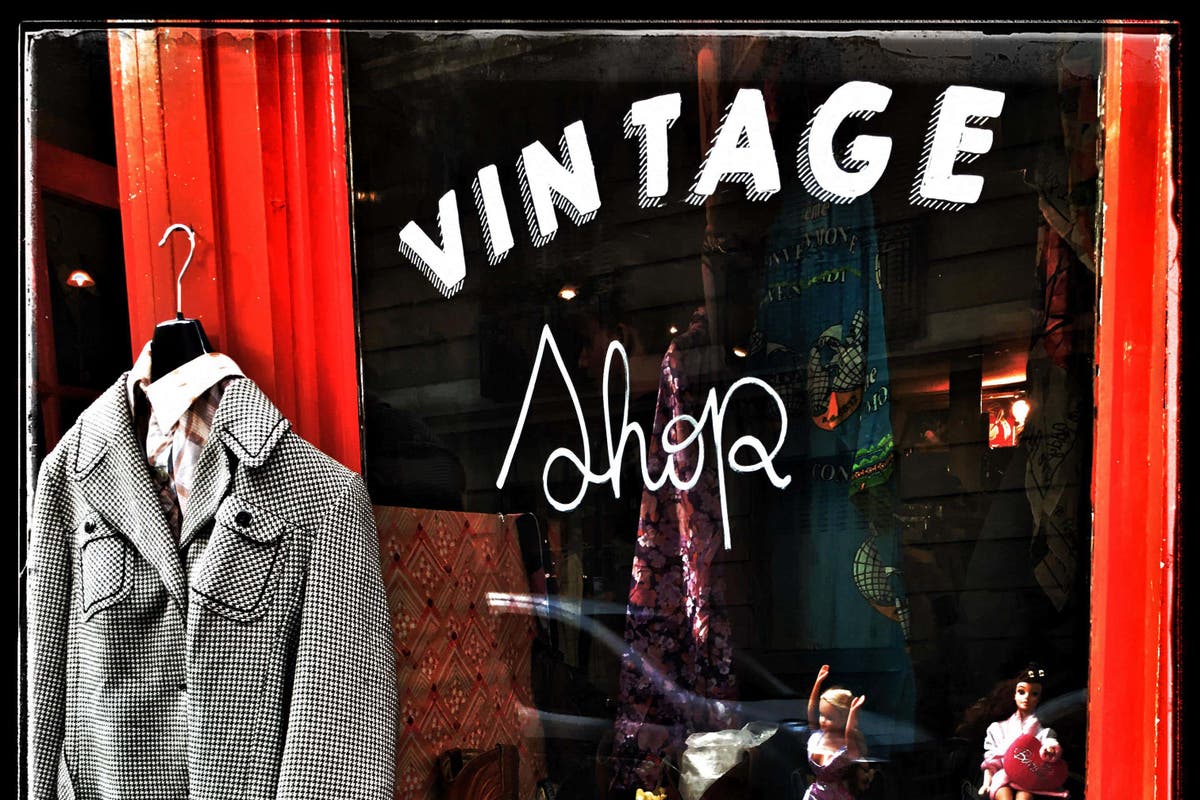World
Conner O’Malley on Going Full Dumbo for Rap World

“I use this word positively, but it’s so stupid. It’s really, really dumb. We would cut it together, and we’d imagine somebody at, like, Sundance having to watch it. Like, They’re gonna hate it. They’re gonna send the FBI to arrest us. This is not a movie.”
Photo: Conner O’Malley via YouTube
“Try to remember these times, man,” one of the heroes of Rap World says late in the film. “Some of the best nights of my life were being had in parking lots.” The year is 2009, and four white dudes in the rural town of Tobyhanna, Pennsylvania, have assigned themselves a mission: to write and record a rap album in one night while they have access to an empty house. (One of their moms is off in Costa Rica getting surgery to make her ears more separated from her head.) A lot is riding on the album. They want it to change their lives forever but also serve as a snapshot of a moment in time and an ode to their hometown, the name of which conveniently rhymes with “Benihana.” What follows is a mockumentary about their efforts to make the album and the distinctly American pastimes that sidetrack them along the way, from McDonald’s runs to hanging out in grocery-store parking lots.
It’s all enough to trigger flashbacks for anyone who was a teen during the early Obama years, but these guys aren’t teenagers — most of them are in their late 20s to early 30s. The years are slipping away, and it’s crunch time: Will they hit it big with their album and buy 100 Corvettes or have to go work “for the railroad,” as their leader, a movie-theater employee named Matt (Conner O’Malley), says?
O’Malley wrote Rap World with co-stars and fellow comedians Eric Rahill and Jack Bensinger, and it fits in comfortably alongside his other portraits of desperate midwestern strivers, like the aspiring tech bro in the high-concept stand-up special Stand Up Solutions or the wannabe improv star in his short film The Mask. While the movie is unapologetically “so stupid,” as O’Malley says, it has a surprising streak of pathos, cleaving a path somewhere between American Movie and Popstar: Never Stop Never Stopping. It also features cameos from comedy favorites including Sarah Sherman, Jeremy and Rajat, and Edy Modica.
At 57 minutes, Rap World is also O’Malley’s debut feature-length film, which he directed alongside his friend and frequent collaborator Danny Scharar. (The two note that the film’s brief run time puts it just shy of Dumbo.) After a festival run, it’s available now on O’Malley’s YouTube channel. Below, O’Malley and Scharar discuss the process of making the film and why they think Paul Schrader would consider it transcendental cinema.
How’d the project come about? I know it started as a short film, and I’m curious about when you decided to expand on that and why.
Conner O’Malley: It started October 2020. The idea was that we would shoot a full weekend of footage and then have it set in 2003, and then we would take all the footage and cut it up into 30-second-long videos and upload them all to a single YouTube channel and title all the videos, like, “JPEG_98764” — all of them would have gibberish titles like that, and there’d be a narrative where you’d have to figure out what order the narrative was in to watch it.
We went and we shot it, and then we just didn’t like what we shot. We sat on it for six months, then Jack Bensinger was like, “I’m going to take a look at this.” He watched it and he was laughing a lot, and he cut together a ten-minute short. We were watching it and we were like, “Okay, I don’t think this is quite ready, but I think there’s a feature here.” So Jack, Eric Rahill, and myself wrote a script, and then over the course of two or three years on weekends, we just shot piecemeal and put it together.
At what point, then, did what you had shot start to actually feel like a feature? Was there a point of no return where you’re like, “Okay, now we have to finish making this into a full-length thing”?
Danny Scharar: I think when Jack found the tone of the edit on that short, that was the North Star of the movie. It was such a nice little shortcut to have when actors would come on the set just for a day to be like, “This is the short version, this is the kind of tone that we’re going for. You can’t really make a mistake. There’s no wrong character choice. You can say the dumbest thing ever and it might be what ends up in the movie, and that’s okay.”
Were all the different plot threads mapped out in the script, or did you find some of the character arcs along the way?
C.O.: When we wrote it, we tried to figure out what the funniest dynamic was between these guys, and it mirrors our own dynamic, where Jack is the connector between me and Eric — kind of a Jerry to the Elaine and Kramer. So we thought it would make sense for our characters to be a little combative. We have three distinct voices, but we all came up in the same comedy scene, and there’s a lot of similarities that we have, so we wanted to give equal time and weave those three things together. The characters that Eric plays are those deeply sad people that you see on Facebook posting the saddest stuff ever, but you feel like a bad person for judging them.
We had an incredibly detailed outline of scenes and the order that they would go in, the beat that we would need to hit, and specific lines that we would want. Because we wanted it to feel real while we were shooting, we would just have this rough framework and improvise throughout. We would roll for 40 minutes on one scene and do the scene over and over again, trying to add new stuff, but more importantly, trying to get to where it felt super natural. It was a big deal for us for it to feel authentic — like if this popped up on your YouTube recommendations and you clicked on it, you’d be like, “Oh my God, this is a horrible documentary from 2009.”
I wanted to ask about the period-piece element. Why specifically 2009, and how did that start opening up other ideas? I haven’t seen a brimmed beanie in a while.
C.O.: We set it in 2009 because we wanted to be able to talk about and reference The Dark Knight, Christopher Nolan’s movie. Because in the short we referenced Dark Knight a lot, but it was 2003 and we were like, “This is bad. It’s a huge mistake we can’t make again.”
How many Dark Knight references are in the movie? I can’t remember any.
C.O.: None.
D.S.: Zero. But you can tell the guys have seen it. There was something about 2009, too, where everyone had cell phones, social media was just on us, but people weren’t taught how to act in front of a camera yet.
The 2009-ness of the movie is so cohesive, aesthetically — is that just a matter of using digital-video cameras?
D.S.: Yeah. We talked about how these guys wouldn’t have bought the newest camera in 2009. Digital cameras existed in 2009, but these guys were using cameras that their parents had in the closet that they used to film piano recitals with.
C.O.: I made this video in 2018 and bought a DV cam for it. It’s called “Teens Save the Mall.” I just went to a dead mall. It’s not a good video, but there’s something about seeing that footage and that location of a mall that was like, Oh, man, this looks like you’re in a different time.
Danny, what was it like co-directing this with Conner, who often directs his own stuff?
D.S.: I feel very lucky to get brought in, and I tried to lend as much of my voice to it as possible while also understanding that on a movie like this, so much of it is just letting go and not trying to force scenes to go anywhere, because every time we try to force some specific thing that feels like This is what a movie’s supposed to do, it starts sucking.
C.O.: Danny was directing in character too. It’s such a small cast and crew that everybody has jokes in this movie. The whole time, we didn’t really know what we were making. It felt like we were just guys dressed as idiots in a house talking, then two years later, it’s at a film festival. But it was an incredibly lucky moment where we had this insane group of super-funny people who were so down to collaborate. I don’t think it was ever a thing where we sat down and did a strict This is what you are.
You guys all seem to have met on Conner’s FX pilot in 2019, or other projects that are more in “the system,” but you’ve now formed this crew that jumps together from one DIY project to the next. Is it nice knowing that even if a studio project doesn’t go, you might get a Danny out of it?
C.O.: That project in particular is interesting, because I started working with [producer] Harris Mayersohn and Danny and Jack — who I had worked with before — but we were able to all become friends. We found ourselves in COVID, which was this interesting time creatively, because everything had stopped and we still wanted to make stuff. And I feel like the internet was always condescended to or thought of as like, Well, it’s just a stupid little thing. Then during the pandemic, it was switched to, TV is a stupid little thing, and the internet is like … now you see Trump on all these podcasts, and The Tonight Show’s down to four days a week. It’s this weird shift, and I feel that in my own career where I’m like, I spent so much time in television development. Then as the TV industry started to collapse, it’s like, Well, look at me. I have an internet thing, I look like I planned this. But no.
Now you’re making a feature film for the first time.
C.O.: We got close, yeah. [Laughs.]
You got to 56 minutes, at least.
C.O.: Yeah, I mean, Dumbo’s like, what, 60 minutes?
D.S.: We said we want to make almost one Dumbo.
C.O.: Yeah, there’s five minutes of Dumbo that sucks.
Rap World’s such a fun movie to watch with an audience. It struck me that it could become a midnight movie that just plays occasionally at rep houses forever. Have you guys had that experience of watching it with audiences?
C.O.: Yeah, that really affected our editing process. I use this word positively, but it’s so stupid. It’s really, really dumb. We would cut it together, and we’d imagine somebody at, like, Sundance having to watch it. Like, They’re gonna hate it. They’re gonna send the FBI to arrest us. This is not a movie. But it’s interesting editing something for the internet versus a theatrical release, and we wanted this to work on both levels. We’ve screened it a ton, and we’ve paired it with Q&As, so we usually sneak in and watch it in a few parts, but yeah, it’s very weird. It’s weird to watch a movie that you would’ve downloaded on LimeWire at BAM.
D.S.: It was a relief seeing it with a crowd for the first time at the L.A. Festival of Movies, and seeing that the things we found funny were resonating with people. This was edited to move at a breakneck pace where you can’t catch your breath, which I think is its strength when you watch it with an audience. You might miss some jokes because people are laughing over the joke that happened half a second before that.
C.O.: There was some guy in the ’50s or something — this might be complete bullshit — but he realized that you could climb to the top of Everest in an hour with no equipment if you just ran and didn’t stop, because your body would not feel the shock of oxygen. So he did it. I feel like if the movie stopped for a second, it would just fall apart.
It’s a funny reveal that Conner’s character is 32 years old. Was that always the case, or just something you improvised?
C.O.: We scripted it for that age dynamic, and we also cut this out, but Jack’s character is 19 years old. Part of it is the movie-theater thing of when you’re working with somebody who’s ten years older than you, but you’re friends with them and you smoke weed with them on break and stuff — like that weird dynamic that happens. We wanted to capture that. I don’t know if it’s a class thing or whatever, but there’s a weird clump of people hanging out from different backgrounds and ages, and it stops after people go to college. Like when I was 16, I was friends with a 37-year-old and her boyfriend, and her boyfriend drank himself to death. He was like 38, but he had a separate fridge full of Icehouses and I was like, This is so cool. But yeah, we wanted that age difference.
So Jack was the primary editor on this, but did you edit as you were shooting or put it all together at the end?
D.S.: There were 70 hours of footage that Jack watched all of. We shot through 90 percent of the script, and we didn’t know exactly where we wanted to end things. And this is a spoiler for the movie, but after the gunshot scene, Jack inserted footage from a real funeral on YouTube of someone singing a parody version of … it wasn’t “Amazing Grace,” but they just inserted someone’s name into a pop song.
C.O.: It was “Amazing Grace,” but they changed the lyrics to like, “Amazing Dave.”
D.S.: Jack inserted that, and it was the funniest cut I’ve ever seen. So that informed what we still needed to shoot. There’s a Paul Schrader quote about additive editing where, basically, it’s a lot easier to only take the good things you have and see how much you need to add to make it make sense, versus putting in everything you have and seeing how much you need to subtract for it to make sense. So for Jack, it was like, Okay, there’s a couple narrative things that we just need to iron out or do a reshoot on or get a pickup of and make just a little more clear. But 95 percent is Jack’s initial cut.
What do you think Paul Schrader would think of this movie?
D.S.: I think he’d say it’s transcendental cinema.
C.O.: [Holds up a book of Paul Schrader’s screenplays.] A lot easier than watching his movies is reading the scripts. It’s cerebral — I go into Cerebro.
I was asking jokingly, but there is an element of Schrader in there.
C.O.: We had these screenings at BAM and the Q&A stuff has been fun, but it’s this weird aspect to it. I’m a stand-up, so the idea of getting up and being like, “Oh, yes, well, the intelligent idea …” I hate it. But I was like, I wonder if we could get Schrader to moderate one of these. I started writing an email, and I was like, I don’t know, I don’t want to bother this guy.
D.S.: He’s asking for people to bother him. He’s giving away his couch on Facebook.
C.O.: I think about that video he made on the High Line a lot. People have tagged me in it. I’ll give it up to that generation of boomers who’re like, “Yeah, film is fucking dying, and that’s cool. What are we doing next?” And I think that we went into this project with that attitude in mind of Yeah, obviously, there’s a movie that we could have made that would’ve been attractive to certain programmers, but it’s not the most interesting movie to us. That’s why this movie is an odd length and shot on DVs. Those are the correct choices at those moments and the most funny. But Schrader’s the king.
The rap aspect of the movie nails a certain kind of white-boy rap — like these guys are trying and failing to do these intricate rhyme schemes as if that’s all it takes. How’d you go about writing those?
C.O.: We showed up to Tobyhanna to shoot, and we realized that we hadn’t written any actual raps, so we had to stop production for four hours while Jack, Eric, and I wrote music.
D.S.: In Jack’s defense, he had ten songs, or at least concepts. “John Gandolfini Is My Favorite Actor,” “Positive School Shooting” …
C.O.: “Positive School Shooting” was mine.
What was the concept there?
C.O.: Reverse of a school shooting. Going in and enlightening these kids that these teachers are poisoning their minds. Shooting a diamond bullet of information into a student’s head to make them more alive.
D.S.: Like the kid that yells at the teacher.
C.O.: Yeah, like that video — “You can’t just give them a freaking packet, yo.” Another thing is, Jack and I, we were in special ed, so at its core, this movie is dedicated to the brave soldiers of special-ed programs all across the nation.
The rap line that stuck out to me was “Illuminating the Illuminati / You never seen me do a Bukkake on Benghazi.”
D.S.: That was Jack off the dome. People have pointed out the Benghazi attack didn’t happen until 2012, and I think it’s important to note that Casey, Jack’s character, is just a geography nerd.
C.O.: When did Gaddafi get overthrown? Nobody talks about how Gaddafi wrote a thing called The Green Book and then that movie won an Oscar.
Has any of us seen Green Book? It could be mentioned in there for all we know.
C.O.: I’ve seen Green Book on YouTube Shorts. Certain scenes.
Has anyone from Tobyhanna seen Rap World? How do they think you did on capturing it authentically?
D.S.: Someone from nearby there informed us during a Q&A that we mispronounce it, and it’s Toby-hannah. So I don’t know how much this will resonate as an accurate portrayal of that specific area, but I think it’s trying to capture that CKY thing — the malaise of suburban white-boy-ness, hanging out in a parking lot. We didn’t do a ton of research on Tobyhanna, but the vibe that you pick up on — there’s an electric vibe there. There’s something …
C.O.: It’s Paris.
D.S.: It’s the Paris nearest to Stroudsburg, Pennsylvania.
Conner, you gave an interview to Vulture last year where you said you feel like you’ve hit a ceiling with no-budget stuff. Is that still true now that you’ve put out a low-budget feature? What’s next for you guys?
C.O.: I’m writing a couple of things. One would be a really expensive movie, and then another one would be below a million. I go back and forth on which one I see actually being able to happen. I think it’s more just a reflection of how strange everything is right now in terms of what’s getting financed and for how much and why. One month you’ll hear, “Oh, it’s only anything below a million that we can make,” and then it’s got to be above $5 million. But one thing I’ve learned is it’s really exciting to me when Danny or Harris gets really excited by an idea, and then they start adding to it. Same thing with Jack or Eric. That base-level collaboration is what really is most exciting, and that generally is something that’s incredibly low-budget.
We’re working out a spiritual sequel to this that’s set in 2003, self-shot DV-cam style, but it’s about three guys working food logistics at a forward-operating base in Iraq. So they’re just these cooks who never leave the base and just make food for the U.S. military.
D.S.: Conner’s given me such agency as an editor and director and helped me grow that. I want to continue working with Conner on whatever he’s got going on, and then have —
C.O.: Danny, stick around after Chris takes off. I got to talk to you for a second.










